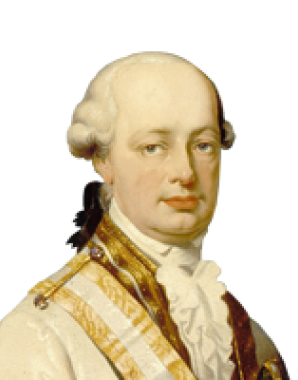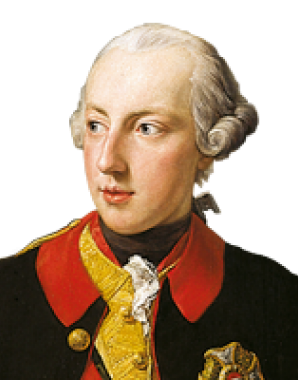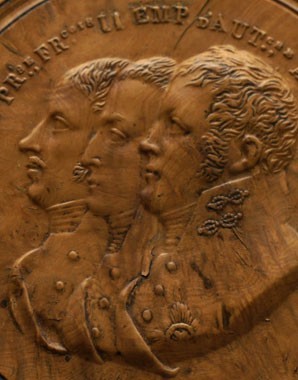Grand Duke Ferdinand III of Tuscany – a regent in times of change
When Ferdinand’s elder brother Franz was summoned to Vienna by their imperial uncle, Joseph II, in order to be groomed as the future emperor and heir to the Habsburg throne, the opportunity opened up for Ferdinand, the second-born son, to become regent of Tuscany.
Born in Florence on 6 May 1769, Ferdinand was the second son of Grand Duke Peter Leopold from his marriage to Maria Luisa of Bourbon-Spain. After his father had moved to Vienna to succeed the childless Emperor Joseph II as Leopold II, the 22-year-old Ferdinand became ruler of this central Italian dominion. At first the new regent followed very much in the footsteps of his father, whose programme of reform based on Enlightenment principles had caused a stir across Europe.
In the difficult times during the Revolutionary Wars initiated by France that had overwhelmed the continent the young grand duke attempted to stay out of the conflict by adopting a policy of neutrality. However, he was inevitably drawn into the maelstrom of events, eventually being driven out of Tuscany by the French in 1799. He and his family fled into exile in Vienna.
As a monarch in exile, he set about trying to find a substitute for the territory he had lost. Ferdinand now became a pawn in the hands of the Great Powers. At first he was given Salzburg. The archbishopric of Salzburg had formerly been one of the many semi-independent minor states of the Holy Roman Empire, and the archbishop was both the spiritual head and secular ruler of the land. Salzburg was then secularized, that is, secular power was removed from the hands of the archbishop and a secular prince installed as ruler. Ferdinand assumed power in Salzburg in 1803. To increase the status of his newly acquired position Salzburg was raised to an electorate, thus giving Ferdinand the highest rank within the Holy Roman Empire.
However, Ferdinand was unable to derive any benefit from this elevation in status, as the Holy Roman Empire was already nearing its end. In the upheavals following the French Revolution, the empire, which was little more than a feudal relic from the Middle Ages, was generally regarded as antiquated and essentially meaningless, and by 1806 it had been dissolved by its last ruler, Emperor Franz II.
Ferdinand’s rule in Salzburg did not in any case last very long. In 1805, following Austria’s catastrophic defeat at the battle of Austerlitz, Salzburg was given to Bavaria, an ally of Napoleon, as part of the French policy of expansion.
Ferdinand was then compensated with the Grand Duchy of Würzburg, another secularized former ecclesiastical state in central Germany, but here again his rule was brief, lasting from 1807 to 1814.
It was not until after the Congress of Vienna that he was able to return to Tuscany, his ancestral dominion. In the meantime however the situation in Italy had changed. During the Napoleonic era Tuscany had at first been part of the Kingdom of Etruria from 1801 to 1807, subsequently becoming a province of the French Empire ruled by Napoleon’s sister, Grand Duchess Elisa, from 1807 to 1814. This French intermezzo had left its mark in Italy, bringing new ideas and political objectives in its wake.
Profoundly disturbed by the upheavals, Ferdinand became a staunch representative of the ancien régime, the old system of princely rule, for the rest of his life. While he was open to the ideas of the Enlightenment, revolutionary furore was deeply alien to him. He displayed a complete lack of understanding for the ideals of the French Revolution, in particular the concept of the modern nation state. Nonetheless, the emerging idea of the unification of Italy as a nation state was soon to put an end to the rule of his descendants in Tuscany.
















